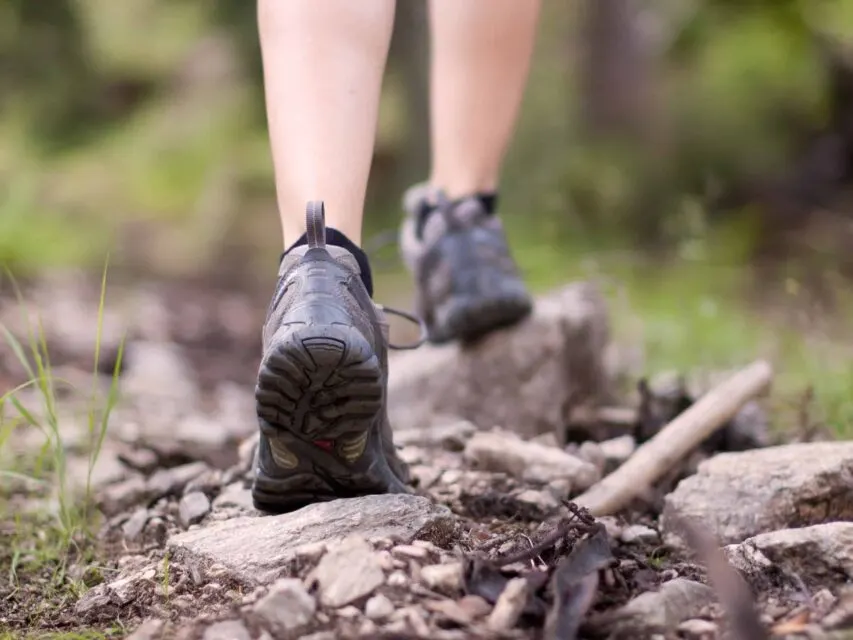Getting reconnected with nature is a natural way to realign yourself with the cause of conservation. Read on for exclusive hiking advice from my dear friend and Pacific Northwest travel blogger, Emily Mandagie of TheMandagies.com!
My husband and I are extremely blessed to live at the foot of the Rocky Mountains. When the weather is good, we love to get out and explore the natural beauty around us – sometimes on horseback, usually on foot!
Some of our favorites in the Front Range of Northern Colorado and the Snowy Mountains of Southeastern Wyoming are:
If you live in the area, I highly recommend you check them out! Similarly, my dear friend and travel blogger, Emily Mandagie of The Mandagies blog, lives at the epicenter of the Pacific Northwest.
Here are her expert tips on how to find an epic hike near you that suits your skill-level and your expectations. Enjoy!
- AllTrails: This platform offers a comprehensive collection of trails with detailed maps, user reviews, and photos. You can search for trails in the Longmont area to find options that suit your preferences.
- Hiking Project: Provides trail maps and information contributed by a community of hikers, offering insights into trails around Longmont.
2. Local Parks and Recreation Departments:
- City of Longmont Parks and Open Space: The city’s official website lists local parks, open spaces, and trails, providing information on amenities and trail conditions.
3. State and National Parks:
- St. Vrain State Park: Located near Longmont, this park offers several trails suitable for various skill levels.
- Rocky Mountain National Park: A short drive from Longmont, this national park features numerous hiking trails with stunning mountain views.
4. Local Hiking Groups and Clubs:
- Meetup: Search for hiking groups in the Longmont area to join organized hikes and meet fellow enthusiasts.
5. Mobile Applications:
- Gaia GPS: This app provides detailed trail maps and navigation tools, helping you explore trails near Longmont.
Tips for Your Hiking Adventures:
- Check Trail Conditions: Before heading out, verify current trail conditions and any advisories or closures.
- Prepare Accordingly: Ensure you have appropriate gear, water, and snacks. Always let someone know your hiking plans.
- Leave No Trace: Follow the principles of Leave No Trace to preserve the natural beauty of the trails.
By utilizing these resources, you can discover a variety of hiking trails near Longmont that cater to different skill levels and interests. Enjoy your adventures!

Interview with PNW Blogger & Hiker Extraordinaire, Emily Mandagie
Q: How do I find a hike in my area? I don’t even know where to look!
A: A great hiking resource is AllTrails.com (even for outside of the US!). You can get your own account and review various hikes based on different weather conditions, whether you’re bringing kids, dogs, etc. Trails.com also is a good resource!
Q: How do you tell how challenging a hike will be? I don’t want to end up somewhere way out of my league.
A: On AllTrails, you can choose the level of difficulty you’d like so you won’t ever do a hike that’s too difficult! Also, in general, don’t be afraid to turn around at any point in a hike. You don’t have to get to the “end” to finish. Hiking is hiking, no matter how far you go!
Q: What would you recommend I pack to be safe? Do I need water? An emergency kit?
A: Pack water for sure. For little morning hikes (2 miles or less) an emergency kit is totally not necessary. If you get hungry, pack a granola bar or something.
However, if you are thinking of doing an all-day hike or multi-day trip, that would require a lot more planning.
Q: Where can I find a map for the hike I want to take?
A: Local guide books are definitely a good resource. They are made locally by people in your area so they are trusted resources. If I am personally looking at a hike to take, I will check it out of several sites before committing. Resources like Google Maps, AllTrails, and general Googling will give you plenty of information about a hike to take. It’s an internet world for sure!

Q: Are there different types of hikes?
A: Yes. Kid-friendly hikes, dog-friendly hikes, overnight trips, and then the classic easy/moderate/hard. The thing I would look at the most is elevation gain and roundtrip mileage. That tells you a lot about a trip. If you gain 1000 feet in elevation but the hike is only one mile long, it’s going to be a super hard one mile! Look at both of them together.
Q: Do I need any gear? What are your go-to’s?
A: Again, this depends on the hike. For most, I would say a lightweight day pack is just fine, if that. Sometimes carrying too much stuff can really suck after a while if you won’t even use it in the end. I’ve also had to do trails that require ice picks, but that was for a week-long, mountain climbing adventure. Not for the beginner. For general half-day hikes, water and a granola bar will do just fine. In the Pacific Northwest throw on a raincoat and you’re good!
Where are YOU from? I’d love to hear all about your favorite hikes and why you love them! Share in the comments.

